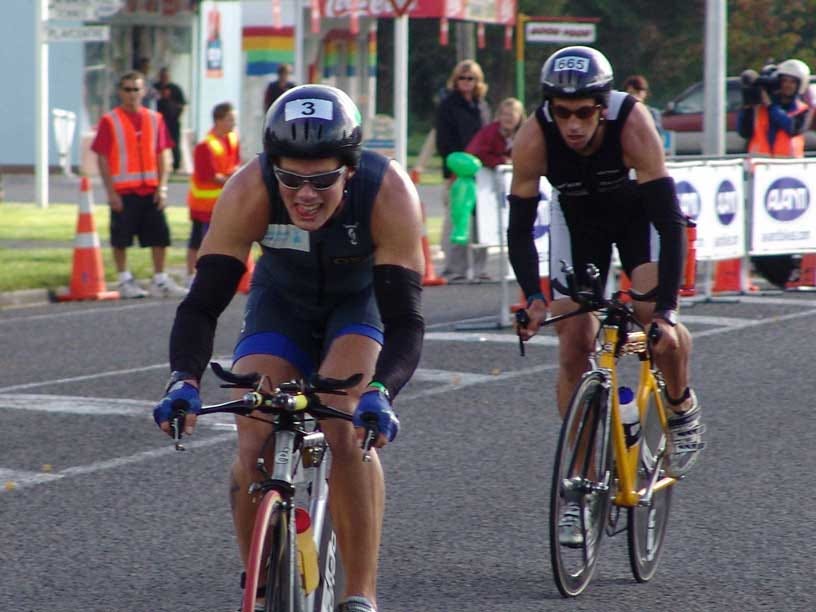Mental Conditioning - Part One
Deep Goals, 1000-Day Pacing & The Athlete's Role

The purpose of this section is to give you tools to rewire your brain. Both the way you see the world, and how you act on your perceptions.
We’re going to be focusing on three main areas:
Ability to act in the gap between stimulus and response.
Ability to act in support of long-term goals.
Notice, then correct, habits of self-sabotage.
Time Horizon
This book started with two questions:
Why are you here?
Or perhaps, what’s your “why” for training?
The deepest forms of motivation have no timeline.
An example:
I feel better when I’m engaged in working towards improving myself.
Feel, Engaged, Work, Self-Improvement
Very different than, say, I’d like to Qualify for World Champs, or Boston, or Kona.
Write out, journal, explore… your goals and motivations. While doing that, pay attention to goals:
Without timelines
Where you control the actions required for success
That you can work towards on a daily basis
Around this deep source of motivation, build a system for personal improvement.
Lessons, learned in sport, can be applied towards any other domain of interest.
Let’s start with a favorite lesson.
Time & Mojo
Coach, how long is it going to take?
The rest of your life.
High-performance is a PHASE of our lives.
For some of us, quite a long phase.
For others, a few years.
The Endurance Journey is what continues.
If you’re embarking on a journey where you’re “putting up” with what’s required to achieve your goal then STOP.
You’re unlikely to be successful.
And it you happen to succeed, you’re certainly not going to be satisfied.
Return to your initial motivation. Why did you want to start?
My motivations were simple:
Look Better
Eat More
Lose Fat
Get Stronger
Feel Better
About as basic as they get.
None of my deep motivations require me to race, win or improve relative to other people.


So when you…
Lose The Fun
Feel Like Training Is Work
Think You’re Not Improving
Pause, then consider…
Have my actions have shifted away from my goals?
I’ll illustrate with an example of what I didn’t set out to achieve:
Chronically Sore
Stressed Out
Hunger No Amount Of Food Could Satisfy
…all while doing 4x the volume required for health.
Make sure you are climbing the “right” mountain.
I Hear You But…
…how long is it going to take?
It’s a fair question. What is a reasonable timeline for improvement? 20 years ago, I’d ask my athletes to give the program 500 days.
I now realize 500 days wasn’t long enough.
My advice was skewed by the fact that I was:
A High Responder
With Exceptional Constitution
With Low Life Stress
A better target is 1000 days.
It was the answer given to me by Scott Molina, when I asked him the question.
Truth is…
Nobody Knows
Go further… the answer is unknowable.
Human performance is a complex multivariate system subject to random events. On top of that, we are moving through a fog of incomplete information.
To cope with complexity, I recommend you adopt a 1000-day mindset.
The 1000-Day Mindset
What do 1000 days represent?
I started my working life in finance and 1000-days is the longest the collective can remember an event.
While it appears that certain events break through the 1000-day barrier:
9/11
World War 2
Vietnam / Afghanistan Wars
Great Depression
…the lessons of an event quickly fade from collective memory.
Nothing we can do about this quirk of human experience.
Much you can do:
Save Your Data
Write Race Reports
Document Every Season
Study History
The above will help you bring history forward. Learning from history will enable you to:
Keep What Works
Remember What Clearly Didn’t
Understand That Short-Term Ups & Downs Are Normal
Looking forward, how should we act?
The Athlete’s Role
Improvement is not under our control.
What’s under our control?
The Journey.
I made a commitment to try my best for 1000 days.
The Courage To Try
The Courage To Change
The Courage To Look At Uncomfortable Truths
In the words of a 6x World Ironman Champion, Mark Allen…
I made a choice to accept whatever was required to achieve my goals.
Understanding what it takes, begins with an honest self-assessment.
What is a daily commitment I can sustain for 1000 days?
Write it down.
Keep moving forward.
Lower the bar each time I fall short.
Notice, and remove, habits that cause me to miss tomorrow.
This works because we are not competing with each other. We are competing with two versions of our future self.
The Goal Inflator: we’re on an upswing and decide to double our daily commitment. A couple weeks later we’re sick, injured or going stale.
which leads to…
The Pessimist: forgetting that setbacks are normal. We become dispirited and wonder, “what’s the point.”
Both of these mindsets are normal.
Return to the athlete's role by observing, learning and persisting over time.
I made a commitment to try my best for 1000 days.
Part Two: Arousal Control
Back To Table of Contents

